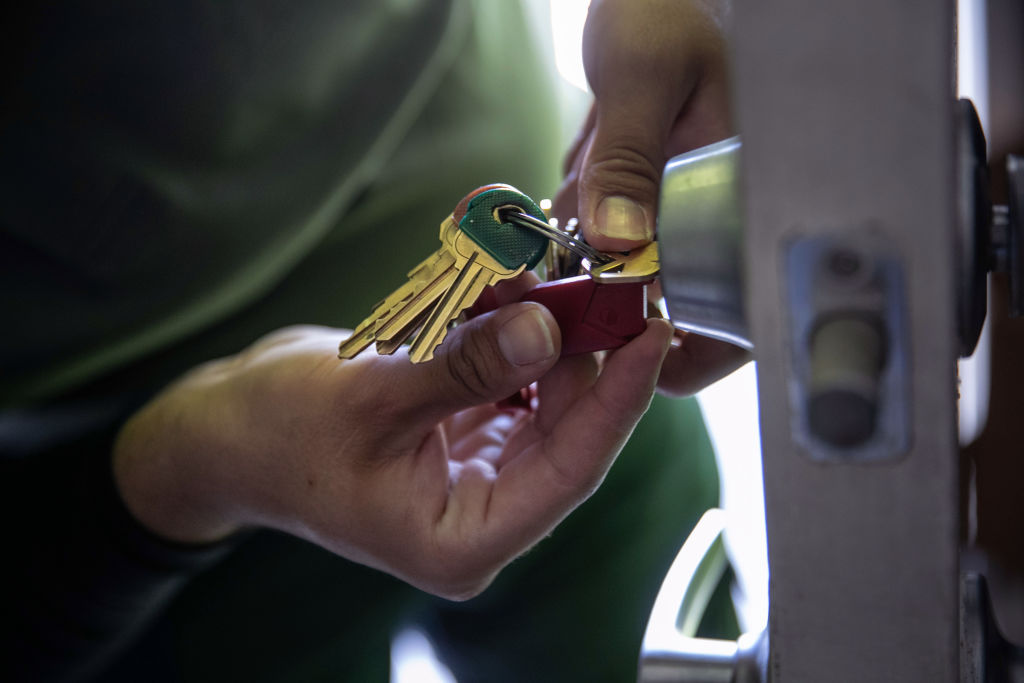Only about 11 percent of federal funds from the Emergency Rental Assistance program have been distributed


Only about 11 percent of federal funds from the $46.5 billion Emergency Rental Assistance program have been distributed by state and local governments to tenants and landlords in need, as the White House in the meantime "braces" itself for a possible Supreme Court blow to its emergency 60-day eviction moratorium, The New York Times reports.
Funded by the federal pandemic relief packages over the last year, total rental aid disbursed thus far has reached just about $5.1 billion, according to the Treasury Department, which oversees the program. In other words, approximately 89 percent of funds have yet to be received.
"There is still way more to do and to do fast," said Gene Sperling, who heads operation of federal pandemic relief programs for President Biden.
The Week
Escape your echo chamber. Get the facts behind the news, plus analysis from multiple perspectives.

Sign up for The Week's Free Newsletters
From our morning news briefing to a weekly Good News Newsletter, get the best of The Week delivered directly to your inbox.
From our morning news briefing to a weekly Good News Newsletter, get the best of The Week delivered directly to your inbox.
Although the federal government runs the program, it is "up to the states" to deliver the aid, the Times writes. And that's been the biggest issue. To combat the slow pace of distribution, which was not "ramping up fast enough to entirely prevent a wave of evictions," the Treasury Department on Wednesday introduced a roster of changes pressuring states to speed things up, per the Times. Local officials believe moving too fast might lead to errors and fraud, but the White House says such risks are "insignificant" compared to the housing crisis some experts now see as "increasingly likely." Notably, officials said there has been some acceleration in distribution pace in August.
States with a backlog of extra funds by the end of September might have their funds reallocated "to other states that have been able to distribute it more effectively," the Times writes. Texas, for example, has been "particularly effective" at ramping up distribution, but others, like New York, Florida, and South Carolina have been "sluggish." Read more at The New York Times.
A free daily email with the biggest news stories of the day – and the best features from TheWeek.com
Brigid Kennedy worked at The Week from 2021 to 2023 as a staff writer, junior editor and then story editor, with an interest in U.S. politics, the economy and the music industry.
-
 Why does Trump want to reclassify marijuana?
Why does Trump want to reclassify marijuana?Today's Big Question Nearly two-thirds of Americans want legalization
-
 Sole suspect in Brown, MIT shootings found dead
Sole suspect in Brown, MIT shootings found deadSpeed Read The mass shooting suspect, a former Brown grad student, died of self-inflicted gunshot wounds
-
 Appetites now: 2025 in food trends
Appetites now: 2025 in food trendsFeature From dining alone to matcha mania to milk’s comeback
-
 Nobody seems surprised Wagner's Prigozhin died under suspicious circumstances
Nobody seems surprised Wagner's Prigozhin died under suspicious circumstancesSpeed Read
-
 Western mountain climbers allegedly left Pakistani porter to die on K2
Western mountain climbers allegedly left Pakistani porter to die on K2Speed Read
-
 'Circular saw blades' divide controversial Rio Grande buoys installed by Texas governor
'Circular saw blades' divide controversial Rio Grande buoys installed by Texas governorSpeed Read
-
 Los Angeles city workers stage 1-day walkout over labor conditions
Los Angeles city workers stage 1-day walkout over labor conditionsSpeed Read
-
 Mega Millions jackpot climbs to an estimated $1.55 billion
Mega Millions jackpot climbs to an estimated $1.55 billionSpeed Read
-
 Bangladesh dealing with worst dengue fever outbreak on record
Bangladesh dealing with worst dengue fever outbreak on recordSpeed Read
-
 Glacial outburst flooding in Juneau destroys homes
Glacial outburst flooding in Juneau destroys homesSpeed Read
-
 Scotland seeking 'monster hunters' to search for fabled Loch Ness creature
Scotland seeking 'monster hunters' to search for fabled Loch Ness creatureSpeed Read
